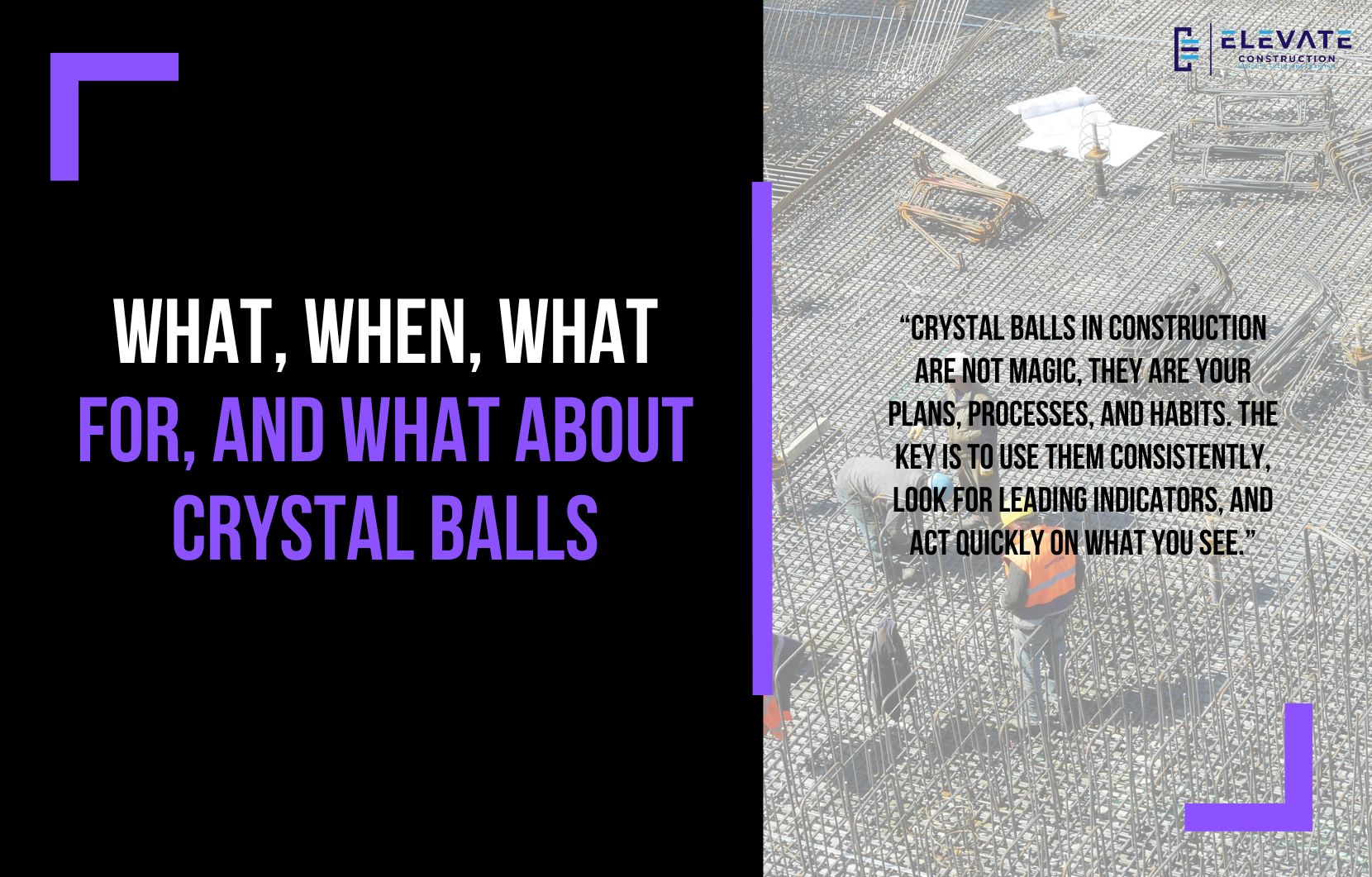Seeing the Future with Crystal Balls in Construction
I recently finished watching The Rings of Power, and one of the things that struck me was the Palantír, those legendary seeing stones or what we might call crystal balls. They allowed leaders to look into the future, anticipate what was coming, and make decisions accordingly. While that may sound like pure fantasy, the truth is we already have our own version of crystal balls in construction. They are not magical stones but tools, processes, and habits that allow us to see ahead and prepare for what’s coming.
The purpose of a crystal ball is vision. It helps you look into the future, see what could be ahead, and take steps to prepare. In construction, the equivalent is the set of practices, plans, and tools that reveal where risks, opportunities, and needs will arise before they hit you in real time. For superintendents, this might include the production plan, logistics plan, zone maps, weekly work plans, day plans, and field walks. For project managers, crystal balls could be budgets, forecasts, project status reports, procurement logs, or risk and opportunity registers. Each of these is a lens into the future, showing what could go wrong, or right and what actions need to be taken now to influence outcomes later.
But having these crystal balls is not enough. The real question is, when will you use them, what will you look for, and what will you do once you see the future? In The Rings of Power, the queen regent and the king spent time regularly looking into the Palantír. They didn’t just have it; they used it. That’s the model we need to adopt in construction.
Take the six habits of a builder, for example. Studying drawings is one of them. When you sit down to study the drawings, that’s you gazing into your crystal ball. What are you looking for? The next areas of work, the methods of installation, and the potential roadblocks. What do you do with that knowledge? You make sure trade partners are ready, resources are secured, and the path is clear for work to flow.
Another habit is reviewing the production plan daily for 15 to 30 minutes. That’s a crystal ball too. When you look into it, you are searching for what’s coming up and when. What do you do with that? You prepare everyone for upcoming tasks, remove roadblocks, and trigger needed actions early.
Field walks serve the same function. When you walk the site, you are not just observing current conditions. You are looking into the future of how work will progress and where support will be required. Then, you take action by communicating needs, removing barriers, and warning others of potential issues.
The long-term habits are also crystal balls. Pull planning, for instance, allows you to see three months ahead. You confirm sequence, commitments, and alignment with milestones. What do you do with that? You ensure trade buy-in, level work across zones, and build a plan that actually supports flow.
Quality pre-construction meetings are another. Held three weeks before an activity, they are a crystal ball that allows you to preview the expectations, visuals, and standards required to build right the first time. What you do with that knowledge is ensure everyone is aligned, trained, and resourced before starting.
And of course, weekly work planning sessions are crystal balls too. You use them to identify upcoming roadblocks, make work ready, and support trade partners in securing what they need. Then you act immediately to remove barriers before they stall progress.
The challenge is not just to know what your crystal balls are, but to schedule when you will use them, clarify what exactly you are looking for, and predetermine what actions you will take based on what you find. Without this discipline, having the tools is no better than fantasy. They only work if you look into them regularly and act on what you see.
I once worked with a mentor who had me list every possible problem that could be discovered when reviewing project KPIs. The exercise wasn’t just about identifying issues, it was about pairing each issue with a specific action. That is the secret. If you do not know what you will do with the insight your crystal ball provides, then you’re just staring into it without direction.
So here is my challenge. Identify your crystal balls. Schedule the time to use them. Define exactly what you are looking for, leading indicators, not lagging ones. And most importantly, decide in advance what actions you will take when you see problems or opportunities.
Construction may not have magical stones, but we do have tools that can show us the future. Use them, and you will keep your projects flowing, your people prepared, and your outcomes remarkable.
On we go.
Key Takeaway
Crystal balls in construction are not magic, they are your plans, processes, and habits. The key is to use them consistently, look for leading indicators, and act quickly on what you see.
If you want to learn more we have:
-Takt Virtual Training: (Click here)
-Check out our YouTube channel for more info: (Click here)
-Listen to the Elevate Construction podcast: (Click here)
-Check out our training programs and certifications: (Click here)
-The Takt Book: (Click here)
Discover Jason’s Expertise:
Meet Jason Schroeder, the driving force behind Elevate Construction IST. As the company’s owner and principal consultant, he’s dedicated to taking construction to new heights. With a wealth of industry experience, he’s crafted the Field Engineer Boot Camp and Superintendent Boot Camp – intensive training programs engineered to cultivate top-tier leaders capable of steering their teams towards success. Jason’s vision? To expand his training initiatives across the nation, empowering construction firms to soar to unprecedented levels of excellence.
On we go

